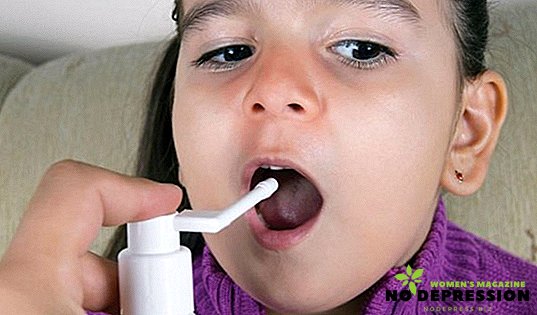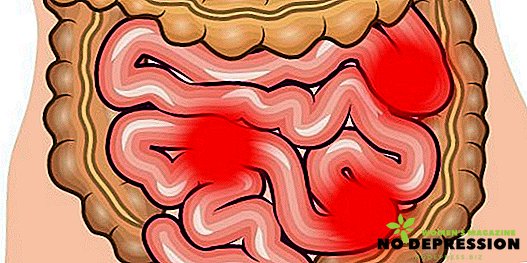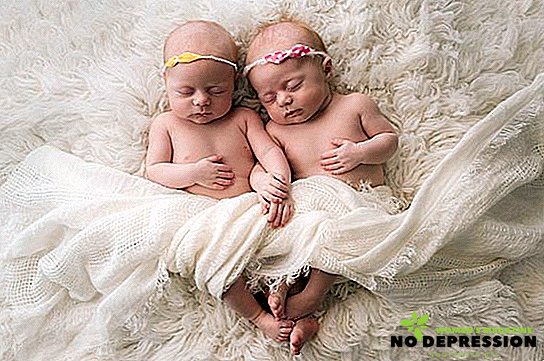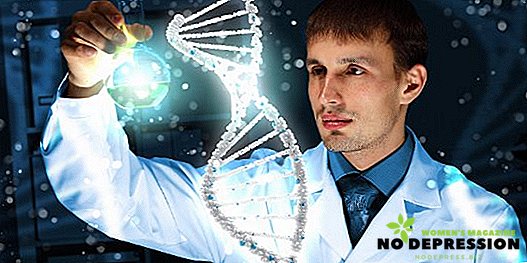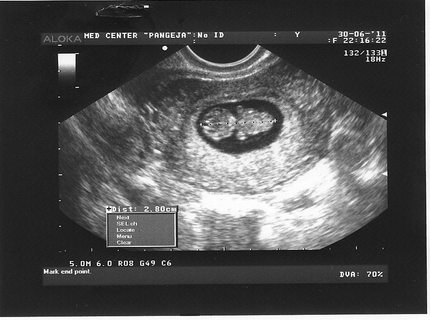Pregnancy is a complex and long physiological process, during which amazing metamorphoses take place - a pair of cells form a new organism, a completely unique creation of nature.
Many expectant mothers, those who are planning a pregnancy or are already carrying a child, need to know what changes are taking place in their body in order to take into account all the risk factors affecting the correctness of the development of the future baby.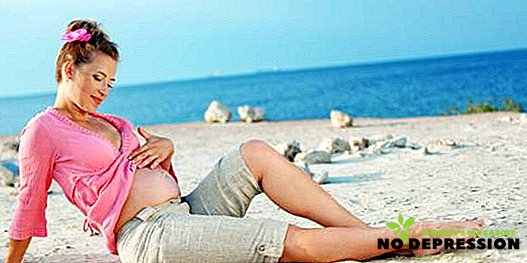
Duration and stages of pregnancy
On average, a person’s pregnancy lasts about 280 days or 40 weeks, this period is calculated from the last menstruation. A child born earlier or later with an amplitude of three weeks is premature or post-term.
Traditionally, the prenatal period is divided into two stages:
- fetal (up to 10 obstetric weeks) - during which fertilization of the female cell takes place, fragmentation, implantation of the embryo in the uterine wall, embryo formation, gradual maturation of the internal organs, growth of the placenta;
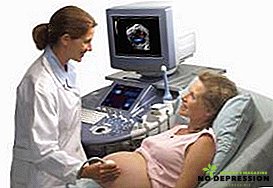
- fetal - the period when the embryo becomes a fetus - it is no coincidence that from 12 weeks the legislator has forbidden abortions.
Also in gynecology, it is customary to consider the course of pregnancy through a prism of trimesters:
- The first trimester conditionally lasts 12 weeks, starts from the moment of the meeting of the male and female cells; it ends with a placentation - the beginning of the functioning of an irreplaceable organ in this period of the life of a woman - the placenta;
- the second trimester - from the 12th to the 27th week - the stage of maturation of the body systems (central nervous, immune and others);
- the third trimester - from 28 to 40 weeks - is a period of preparing the internal organs for extrauterine life.
Doctors separately distinguish the "critical", the most responsible and complex stages of development:
- the period of implantation and the beginning of cell division (from the moment of conception up to 2 weeks);
- the period of the formation of internal organs and placenta (from the 3rd to the 8th week);
- a period of easy permeability of the “children's place” (from the 32nd to the 36th week).
Consider a detailed description of the development of the fetus and the sensations of a woman by week of pregnancy.
First trimester (up to 12 weeks)
The countdown of the period of development of the fetus begins precisely from the moment of conception, which occurs in the third week of the last menstruation. The previous 14 days the woman's body was actively preparing for this event - it happens every month, and is marked by the beginning and end of menstruation.
During this time period, the egg matures and begins its journey through the fallopian tube, ovulation takes place.
Week 1 - Conception and the beginning of cell division
Fetal development
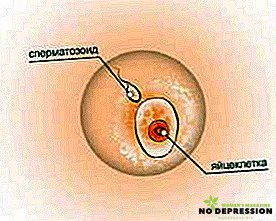 The history of any human body begins with a meeting of male and female germ cells. After moving to the fallopian tube, the egg "lives" the whole day, while the spermatozoa remain in the body for another 2-3 days after unprotected intercourse.
The history of any human body begins with a meeting of male and female germ cells. After moving to the fallopian tube, the egg "lives" the whole day, while the spermatozoa remain in the body for another 2-3 days after unprotected intercourse.
When these cells merge, a zygote is formed, which in the course of 3-4 days moves towards the uterus to begin growth.
Fragmentation of cells occurs at a tremendous pace - if a 3-day embryo contains 8 cells, then a 4-day embryo is as much as 20. The cells are not completely organized and are a hollow ball.
Condition of a woman
At the same time, it seems to the woman that “menstrual periods” are about to come: the breast becomes more sensitive, the state resembles the premenstrual one. In this case, the usual pregnancy test will not give the correct result, only a laboratory blood test can help especially impatient.
Ultrasound will also give productive results - it becomes known in a short time exactly where the embryo will be fixed.
A slight increase in temperature may also indicate a pregnancy.
Spotting at this stage can indicate both miscarriage and menstruation (according to statistics, about 30% of women have the usual "monthly" after the onset of pregnancy). However, the intense nature of the bleeding, sharp pain - symptoms of miscarriage, in which an urgent need to contact a gynecologist.
Week 2 - implantation
Fetal development
 At the border of two weeks - the 7-8th day - the implantation of the embryo in the tissue of the uterus occurs - the endometrium, which will be a source of nutrients for a long time. The “implant” itself is sometimes accompanied by slight hemorrhage, since the integrity of the tissue is disturbed.
At the border of two weeks - the 7-8th day - the implantation of the embryo in the tissue of the uterus occurs - the endometrium, which will be a source of nutrients for a long time. The “implant” itself is sometimes accompanied by slight hemorrhage, since the integrity of the tissue is disturbed.
Next, the ovum passes to the cell grouping stage - all of them are divided into three layers, among which the inner one will form the lungs, the liver, the digestive organs, the middle skeleton and the circulatory system and the outer nervous system, skin, etc. in the future.
Condition of a woman
Due to the fact that chorionic gonadotropin begins to be actively produced, it becomes possible to learn about the onset of pregnancy with the help of the usual pharmacy test. The chest becomes more sensitive, the general symptoms still resemble a premenstrual symptom.
On ultrasound, it is easy to examine the corpus luteum, performing the function of the placenta.
The cervical canal is filled with a mucus plug that protects your baby from infectious diseases. Discharge is normal - transparent, however, non-essential blood bleeding is possible with implantation. Also, when women become pregnant, their immunity is often reduced, and the flora itself becomes favorable for the "thrush" - from which abundant cheesy discharge is possible. The fungus is easily treated without consequences for the fetus.
Week 3 - the first heartbeats
Fetal development
On the 3rd week, the neural tube begins to close - the basis for the spine, the spinal cord and the brain begin to form, and on the 21st day a significant event occurs - the tiny heart begins to beat.
Also, the sex glands, ova and spermatozoa begin to develop. The child is actively growing
Condition of a woman
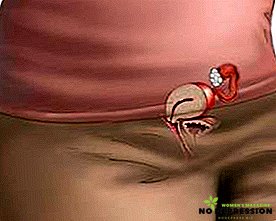 If during the previous week a woman has little idea of her condition, then the 3rd is often marked by the advent of "toxicosis." In addition, the body quickly tired, changing dietary habits, swelling of the mammary glands, changing mood.
If during the previous week a woman has little idea of her condition, then the 3rd is often marked by the advent of "toxicosis." In addition, the body quickly tired, changing dietary habits, swelling of the mammary glands, changing mood.
An ultrasound and test can give a complete picture of the presence of a fetus in the uterus, and a blood test for hCG and progesterone will help identify potential threats of miscarriage.
Monthly at this time - rather rare than the rule. Normally, the discharge is transparent, and the appearance of "candida" is also likely. The changed color and smell of secrets testify to infectious and venereal diseases.
Week 4 - Organ Tab
Fetal development
A foundation is laid for the internal organs, the heart rhythm is accelerated, the rudiments of arms and legs are formed, and most importantly, the neural tube is transformed for the growth of the brain. The transition to placental nutrition is gradually being prepared, the corpus luteum loses strength, the placenta is bound to the fetus by the umbilical cord.
Condition of a woman
 A woman should be prepared for the fact that toxicosis will pursue her until the end of the 12th week, because male cells are alien to the body. Often a pregnant woman begins to suffer spinal pain associated with changes in body weight and restructuring of the body.
A woman should be prepared for the fact that toxicosis will pursue her until the end of the 12th week, because male cells are alien to the body. Often a pregnant woman begins to suffer spinal pain associated with changes in body weight and restructuring of the body.
At this stage, the gynecologist will offer all sorts of tests, which should not be neglected.
Blood, greenish, yellowish and other secretions are not the norm. The uterus increases in size, but the changes are not noticeable.
Week 5 - first movements
Fetal development
 The heart is divided into two chambers, metamorphosis of the reproductive system is observed.
The heart is divided into two chambers, metamorphosis of the reproductive system is observed.
The brain is divided into two hemispheres, improved facial features - marked nose, eyes, mouth.
Pens can bend, grow the rudiments of fingers. The embryo makes the first small movements, but for the mother it is not noticeable.
The umbilical cord fully completes its formation, the placenta acquires a dense structure.
Condition of a woman
The ligaments supporting the uterus are stretched, causing slight pain in the lower abdomen. Pigmentation of the skin around the nipples is enhanced, the urge to urinate becomes more frequent. Problems with digestion are possible. Should carefully monitor the nature of the discharge. The uterus already reaches the size of a small egg, but pregnancy is completely invisible.
Week 6 - continued organogenesis
Fetal development
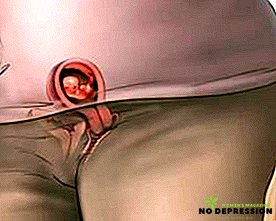 The heart is improved to four. Develop lungs, bronchial tree. Unique facial features appear, eyes continue to form, the iris acquires color.
The heart is improved to four. Develop lungs, bronchial tree. Unique facial features appear, eyes continue to form, the iris acquires color.
The phalanges of the fingers grow, the future child can completely bend and unbend them. The intestine is already so large that it does not fit in the stomach - part of it is located in the umbilical cord. The genitals have a different appearance, but this is not visible on ultrasound.
Maternal condition
A young mother should pick up a new underwear, as the breast is growing rapidly. Drowsiness, irritability increases. Changes the skin condition. The uterus during inspection is already probed, the pharynx is completely closed with a stopper.
Week 7 - gland formation
Fetal development
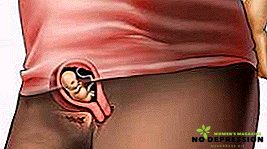 In the seventh week from the moment of conception, the tail disappears at the base of the spine.
In the seventh week from the moment of conception, the tail disappears at the base of the spine.
The placenta itself begins to produce hormones, supporting intrauterine processes. Large blood vessels and endocrine glands complete their formation.
The formation of the pituitary, cerebellum, middle layer of the adrenal glands and lymph nodes.
The child begins to pucker and swallow. A neck emerges.
Maternal condition
The mother’s kidneys will continue to work with a double load, since the baby’s urinary system develops. At the same time the body begins to accumulate fat reserves. The uterus grows to the size of a tennis ball, so a woman can feel it by examining her body.
Week 8 - Completion of Organogenesis
Fetal development
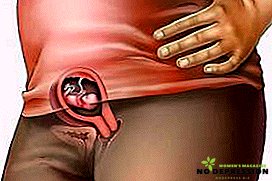 The eighth week is one of the most important, as the laying of all vital organs and tissues comes to an end, the main crisis stage is over. Next, the child will only gain weight and height.
The eighth week is one of the most important, as the laying of all vital organs and tissues comes to an end, the main crisis stage is over. Next, the child will only gain weight and height.
The size of the fetus does not exceed 4 cm, but it already represents a fully formed organism with fingers, knee, elbow joints, auricles and mouth. Normally, the child is already able to bring a fist to his mouth.
The nervous system by this time is quite developed, therefore, according to numerous studies, the kid is able to feel physical pain.
The rudiments of milk teeth are only formed. Boys already produce their own testosterone, and in girls, eggs are laid - their number is definitely for the rest of their lives.
It is this week that the doctor will offer to do the first diagnostic test before the ultrasound screening, because, thanks to the technique, it is possible to find out whether the child has serious genetic diseases - for example, Down's disease.
Maternal condition
The uterus gradually begins to rise above the pubic joints, preparing to increase in size.
Week 9 - End of the Embryonic Period
Fetal development
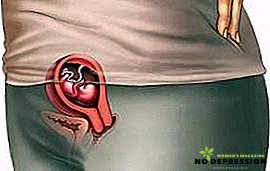 The embryonic period is complete, now the baby will begin to grow rapidly.
The embryonic period is complete, now the baby will begin to grow rapidly.
The heart is fully functioning, the blood vessels are fully formed.
The liver develops, the intestine makes the first movements, weakly resembling peristalsis.
The fetus tries to move its head, there is a weak sense of smell, which will help to find the breast at birth. The baby begins to move around the uterus in free swimming, reacting to movements, sounds, grabbing the umbilical cord.
Maternal condition
Toxicosis comes to naught. It becomes uncomfortable for a woman to sleep on her back, a feeling of constant thirst appears as the volume of amniotic fluid grows.
Week 10 - screening
Fetal development
 The main systems of the body are fully formed, all organs are actively working and improving. The first hair covering appears - downy hair. The child leads an active lifestyle, grimaces and waving his arms. The glands begin to function, the intestine is able to contract, the liver secretes bile.
The main systems of the body are fully formed, all organs are actively working and improving. The first hair covering appears - downy hair. The child leads an active lifestyle, grimaces and waving his arms. The glands begin to function, the intestine is able to contract, the liver secretes bile.
The tip of the nose takes shape, the ears are still shifted.
Maternal condition
The uterus is actively growing, a little cramping the intestines and bladder. At this stage, mothers will be offered to do a comprehensive screening, in order to exclude the presence of defects in the development, an ultrasound scan and a biochemical blood test are performed. Screening can detect severe genetic diseases, and some parents will have to make a difficult choice between saving or terminating a pregnancy. Especially experienced Uzista manage to assume the sex of the future baby.
Most of all suffer from sprains of the ligament on the stomach and lower back, which is associated with the transition of the uterus up. The number of whiter increases dramatically, other types of discharge may be accompanied by diseases.
Week 11 - the beginning of the development of emotions
Fetal development
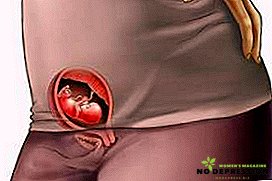 The first and most important trimester comes to an end, the child’s growth is 7 or 8 cm. Muscle and bone tissue are improving, the digestive system acquires hairs, which will soon move the food. The male sexual organ is lengthened, the prostate gland develops. The rudiments of milk teeth are fully formed in the gums. Pancreas is taken for insulin production.
The first and most important trimester comes to an end, the child’s growth is 7 or 8 cm. Muscle and bone tissue are improving, the digestive system acquires hairs, which will soon move the food. The male sexual organ is lengthened, the prostate gland develops. The rudiments of milk teeth are fully formed in the gums. Pancreas is taken for insulin production.
The most important achievement concerns the emotional sphere - the child listens to new sounds, smiles, hardly sleeps. The movements of the arms and legs are still chaotic. The kid already distinguishes the taste of food, has taste preferences.
Maternal condition
The second trimester begins - the quietest time of pregnancy. The fetus is not yet so heavy that walks seem to be difficult, and the body no longer perceives the male sex cells as something alien. However, an enlarged uterus leads to heartburn and problems with defecation. From this period, the gynecologist will measure the abdominal circumference and the height of the uterus.
Second trimester
Created organ systems only debug work. From the 22nd week, neonatologists manage to leave the child in case of premature birth. This stage is characterized by intensive growth of the fetus and the development of higher brain structures.
Week 12 - Gender Recognition
Fetal development
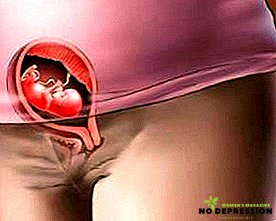 The facial features continue to change - the ears have moved to the proper location. Finally, it becomes possible to recognize the sex, since the external genitalia are finally transformed into male and female types.
The facial features continue to change - the ears have moved to the proper location. Finally, it becomes possible to recognize the sex, since the external genitalia are finally transformed into male and female types.
The child’s height is almost 10 cm, but his movements are not yet visible to the mother. The fetus acquires the ribs, and their movement looks more and more like raising and lowering when breathing.
The coat consists of eyelashes, eyebrows, hair on the heads and "lanuto" - a thin gun, designed to hold on the skin a special thick lubricant that helps to pass through the birth canal.
Muscles are so developed that the kid is able to push off from the abdominal wall, which does not go unnoticed by thin girls.
Maternal condition
The child consistently takes most of the nutrients from the woman, which negatively affects the condition of the hair, teeth and gums. Already at this stage, many women note the appearance of stretch marks. The uterus is located between the articulation and the navel, it is easy to feel it, just putting your hand on the stomach. The edge rises 13 cm above the pubis.
Week 13 - complication of the cerebral cortex
Fetal development
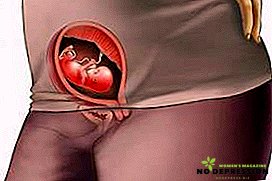 The brain surface is covered with brains and grooves, nerve cells quickly divide. Sweat glands start working. Baby actively absorbs nutrients and urinates in the amniotic fluid.
The brain surface is covered with brains and grooves, nerve cells quickly divide. Sweat glands start working. Baby actively absorbs nutrients and urinates in the amniotic fluid.
The heart makes about 150 beats per minute, pumping nearly 30 liters of blood.
From this week, the child begins to exercise the lungs, inhaling and spitting back the liquid. Open the glottis - the child is preparing for the first cry. The cub performs a number of acrobatic tricks, building up its musculature.
The work begins with the placenta, which now supplies oxygen, removes waste, produces its own progesterone and estrogen. The eyelids of the child are still covered.
The bone marrow begins to produce white blood cells - the immune system prepares to protect the baby after birth.
Bone tissue hardens, and the skin becomes multi-layered, even if it is transparent. The fruit gradually acquires the human species - the body and limbs are extended. Growth exceeds 10 cm.
Maternal condition
At this stage, conduct a second screening. Second-trimester biochemical test gives more accurate results. Since the study provides only a presumptive result, women over 30 are recommended to take amniotic fluid.
Week 14 - First Movements
Fetal development
 The growth of the child exceeds 11 cm. The composition of the blood by this week corresponds to an adult, as the bone marrow begins to produce blood cells. Ordinary hemoglobin appears in the blood. The thyroid gland develops, which reproduces thyroxin and triiodothyronine, preparing the body for the digestion of proteins and the onset of fat stores, which will appear next week.
The growth of the child exceeds 11 cm. The composition of the blood by this week corresponds to an adult, as the bone marrow begins to produce blood cells. Ordinary hemoglobin appears in the blood. The thyroid gland develops, which reproduces thyroxin and triiodothyronine, preparing the body for the digestion of proteins and the onset of fat stores, which will appear next week.
The liver, which was previously engaged in blood formation, begins to play a digestive role, other organs conduct "training." In the intestines of the child accumulates original feces consisting of bile. Мочеиспускание происходит почти каждые 40 минут.
Ногти на пальцах почти приняли форму. Лицо "очеловечилось", поскольку глаза встали на отведенное им место.
Состояние матери
На этом этапе женщина впервые чувствует, что внутри её зародилась жизнь. Рост плода приводит к повышению аппетита. Вес матки достигает 250 грамм, выступ достигает расстояния до пупка.
Неделя 15-ая - период гиперпигментации
Развитие плода
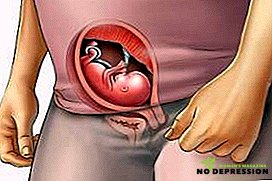 Плод на это неделе обзаводится жирком, участвующим в процессе теплообмена. В работу включается собственная иммунная система, производятся иммуноглобулин и интерферон - ребенок способен защититься от инфекций, если мать заболеет.
Плод на это неделе обзаводится жирком, участвующим в процессе теплообмена. В работу включается собственная иммунная система, производятся иммуноглобулин и интерферон - ребенок способен защититься от инфекций, если мать заболеет.
Рост составляет 13 см. У девочек постепенно формируется матка. Начинается закладка постоянных зубов, которые "встают в очередь" за молочными.
Нервная система достаточно зрела, чтобы начинать общаться с ребенком, который способен узнавать голоса близких ему людей, распознавать музыку, а также плохое настроение матери.
Состояние матери
Матка постоянно растет, женщина страдает о учащенного мочеиспускания, отдышки. Органы должны несколько потесниться, что приводит к изжогам и проблемам пищеварения. Живот начинает выступать, спать на нем становится нереально. В норме женщина начинает прибавлять по 200-300 грамм в неделю.
Неделя 16-ая
Развитие плода
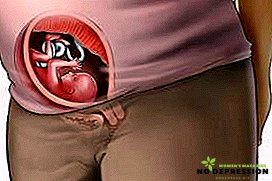 Сердцебиение отлично прослушивается на специальном оборудовании, плод достигает роста 14 см. Продолжается рост бровей и волос на голове. Кожные покровы полностью сформированы, но они настолько нежны, что кровеносная система полностью просматривается.
Сердцебиение отлично прослушивается на специальном оборудовании, плод достигает роста 14 см. Продолжается рост бровей и волос на голове. Кожные покровы полностью сформированы, но они настолько нежны, что кровеносная система полностью просматривается.
Плод свободно плавает в амниотической жидкости, начинают работать слюнные железы. Реакции на свет звук улучшается, потому лучше избегать громких звуков. Ребенок вертит головой, дергает руками. Ученые считают, что подобная гимнастика положительно сказывается на умственном развитии ребенка.
Состояние матери
Мать должна следить за движениями малыша - если движения происходят чаще, чем 4- 8 раз в час, то это говорит о кислородном голодании. Размерами матка схожа с небольшой дыней. Тяжесть плода сказывается на функционировании опорно-двигательного аппарата женщины - походка беременной меняется.
Неделя 17-ая - совершенствование нейронных связей
Развитие плода
 Нейроны отлаживают систему взаимодействия, в результате чего малыш учится управлять глазными яблоками. Движения ребенка становятся более координированными. Бронхиальное дело завершает свое формирование. Сальные железы продолжают работу, покрывая тело смазкой бело-серого цвета и скапливаясь в складках. Пушок разрастается по всему телу и исчезает ближе к родам.
Нейроны отлаживают систему взаимодействия, в результате чего малыш учится управлять глазными яблоками. Движения ребенка становятся более координированными. Бронхиальное дело завершает свое формирование. Сальные железы продолжают работу, покрывая тело смазкой бело-серого цвета и скапливаясь в складках. Пушок разрастается по всему телу и исчезает ближе к родам.
Шейка крохи достаточно окрепла, чтобы поворачиваться на 180 градусов. Роста малыша превышает 15 см. Вес малыша наконец-то превышает вес плаценты. Кожа ещё очень тонкая, под ней теперь можно увидеть бурый жирок. Иммунная система начинает функционировать в полную мощь.
Состояние матери
Грудь значительно увеличивается, гормоны провоцируют поступление крови к молочным железам. Матка весит более 300 грамм, продолжает подниматься. Вес матери увеличивается до 6 кг.
Неделя 18-ая - улучшение слуха
Развитие плода
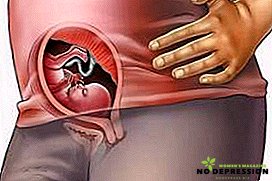 У малыша окончательно завершает формироваться внутреннее ухо, до этого бывшее слишком примитивным - появляются маленькие косточки. Сетчатка глаза становится светочувствительной, глазное яблоко готово к созерцанию, появляется рефлекс моргания. Однако глаза ещё закрыты.
У малыша окончательно завершает формироваться внутреннее ухо, до этого бывшее слишком примитивным - появляются маленькие косточки. Сетчатка глаза становится светочувствительной, глазное яблоко готово к созерцанию, появляется рефлекс моргания. Однако глаза ещё закрыты.
Костная ткань продолжает твердеть. Живот и ягодицы становятся очень чувствительными. Зубы покрываются дентином. С этого времени ребенок начинает длительно спать, сон приобретает фазное деление.
Состояние матери
Возможно появление судорог в ногах из-за набора веса. Матка выпирает на 12 см над лоном. Между тем, у некоторых женщин бывают тренировочные схватки, никак не воздействующие на малыша.
Неделя 19-ая
Развитие плода
 На этом этапе рост малыша превышает 16 см, вес - около 300 грамм, плод по размерам равен небольшому кабачку. Тело по-прежнему покрыто сыровидной смазкой, защищающей кожу от околоплодных вод. Ребенок может трогать собственное лицо, плодный пузырь, теребит пуповину, бьет её ногами. Уже известно, будет ли малыш левшой или правшой.
На этом этапе рост малыша превышает 16 см, вес - около 300 грамм, плод по размерам равен небольшому кабачку. Тело по-прежнему покрыто сыровидной смазкой, защищающей кожу от околоплодных вод. Ребенок может трогать собственное лицо, плодный пузырь, теребит пуповину, бьет её ногами. Уже известно, будет ли малыш левшой или правшой.
Группа нервных клеток, отвечающая за органы чувств, полностью сформирована. Ребенок начинает взаимодействовать с внешним миром, отвечая ударами на громкие звуки. Любой стресс сопровождается повышением активности. В кишечнике активно накапливается меконий, который выйдет после рождения.
Состояние матери
Организм матери претерпевает огромные изменения, повышается сердечный импульс, пульс учащается, увеличивается объем крови, отчего снижается уровень гемоглобина и снижается количество красных телец. Женщину преследуют поясничные боли, матка передавливает пузырь, из-за чего возникает застой мочи, что рискует обернуться пиелонефритом, угрожающим плоду. Зачастую из-за веса воспаляется симфиз.
Неделя 20-ая
Развитие плода
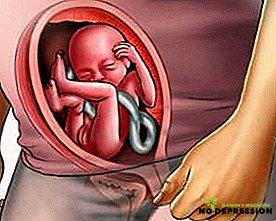 К концу двадцатой недели рост переходит отметку в 20 см. Под защитным слоем смазки клетки кожи активно делятся, формируя слои эпидермиса. Ребенок отличает день от ночи и становится активным в разное время суток. Глаза закрыты, но это не мешает малышу хорошо знать окружающую среду - согласно исследованиям, близнецы и двойни могут держать друг друга за руки.
К концу двадцатой недели рост переходит отметку в 20 см. Под защитным слоем смазки клетки кожи активно делятся, формируя слои эпидермиса. Ребенок отличает день от ночи и становится активным в разное время суток. Глаза закрыты, но это не мешает малышу хорошо знать окружающую среду - согласно исследованиям, близнецы и двойни могут держать друг друга за руки.
Позвоночник обзавелся межпозвонковыми дисками, плод при желании наклоняет голову, движения усложняются. Ребенок может пытаться подать матери сигнал, если недоволен расположением или слишком громкими звуками.
Состояние матери
К конце второго триместра может появиться ещё более неприятное явление - геморрой. Кроме того, мать может ощущать тренировочные схватки, при этом они не должны сопровождаться сильной болью. Матка уже упирается в диафрагму, появляется отдышка.
Неделя 21-ая
Развитие плода
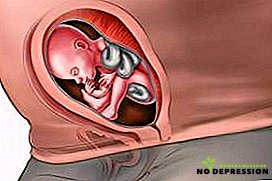 Вес ребенка увеличивается на 100 г., становится около 350 г, размер плода - около 25 см. Ребенок питается и дышит амниотической жидкостью, при этом околоплодные воды меняют состав каждые 3-4 часа.
Вес ребенка увеличивается на 100 г., становится около 350 г, размер плода - около 25 см. Ребенок питается и дышит амниотической жидкостью, при этом околоплодные воды меняют состав каждые 3-4 часа.
На языке завершают формирование вкусовые рецепторы. Глазные яблоки активно движутся. Кишечник начинает всасывать и усваивать углеводы. Костный мозг окончательно замещает селезенку и печень на пост производителя кровяных клеток.
Зубы подготавливаются к образованию эмали. Яички мальчика начинают путь из брюшной полости. У девочек формируется влагалище. На этом этапе может быть выявлен недостаток околоплодных вод или многоводие - и то, и другое вредит плоду и требует коррекции.
Состояние матери
На данном этапе матери требуется больше кальций, чем когда-либо. Отсутствие должного питания скажется на состоянии зубов и спровоцирует спазмы в ногах. Многие женщины остро страдают от анемии. Усиливается аппетит. Матка сдавливает нижнюю полую вену, отчего ноги постоянно отекают.
Неделя 22-ая
Развитие плода
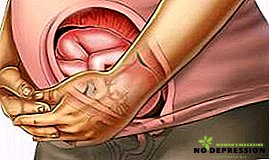 Рост плода составляет 28 см, вес - 500 грамм. Преждевременные роды на 22-ой неделе могут окончиться счастливо - медицина позволяет выходить такого ребенка без серьезных отклонений в развитии. Мозг малыша достигает веса в 100 грамм. Альвеолы легких становятся зрелыми и продуцируют вещество, препятствующее сжиманию при дыхании.
Рост плода составляет 28 см, вес - 500 грамм. Преждевременные роды на 22-ой неделе могут окончиться счастливо - медицина позволяет выходить такого ребенка без серьезных отклонений в развитии. Мозг малыша достигает веса в 100 грамм. Альвеолы легких становятся зрелыми и продуцируют вещество, препятствующее сжиманию при дыхании.
Ребенок заполняет всю полость матки, растягивая её. Кожа постепенно вырабатывает пигмент, появляются отпечатки пальцев. На этом этапе показанием к кесареву сечению может быть гестационный диабет - низкий уровень сахара в крови, поэтому проводятся дополнительные тесты.
Состояние матери
Матери следует внимательно следить за прибавками веса и выделениями. В данный период особенно опасно подтекание околоплодных вод. Малыш, активно двигается и долгое лежание не поощряется - это может привести к обвитию пуповины.
Неделя 23-я
Развитие плода
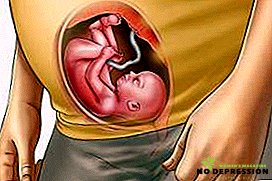 Масса ребенка достигает 600 грамм, начинается самостоятельная выработка гормона роста. Кожа ребенка очень сморщена. Происходит бурный рост жировой ткани. Руки удлиняются, отрастают ногти, которые после рождения нужно будет аккуратно подстричь. Волосяной покров пигментируется.
Масса ребенка достигает 600 грамм, начинается самостоятельная выработка гормона роста. Кожа ребенка очень сморщена. Происходит бурный рост жировой ткани. Руки удлиняются, отрастают ногти, которые после рождения нужно будет аккуратно подстричь. Волосяной покров пигментируется.
Половые органы продолжают развиваться - яички у мальчиков постепенно опускаются. Частота шевеления плода - около 10 раз в день. Согласно исследованиям, именно на этой неделе нервная система претерпевает изменения, которые позволяют малышу видеть сны. Селезенка активно занята кроветворением, вырабатывая лейкоциты и моноциты.
Состояние матери
Из-за выработки прогестерона возможны побочные эффекты в виде закупорки вен, отека конечностей и вздутия живота. Женщин примерно с этого времени мучает сильная изжога. Проходят последний скрининг - УЗИ и биохимию крови.
Неделя 24-я
Развитие плода
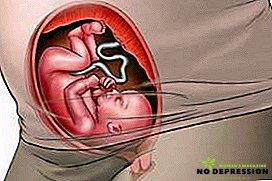 Рост малыша составляет уже 30 см. К этому возрасту ребенок переворачивается и находится головой вниз. Ребенок спит около 15-20 часов. Глаза при этом покрыты тонкой пленкой. Шевеление становится более отчетливым, поскольку малыш упирается в стенки матки. Однако есть случаи, когда плацента крепится по переднему краю.
Рост малыша составляет уже 30 см. К этому возрасту ребенок переворачивается и находится головой вниз. Ребенок спит около 15-20 часов. Глаза при этом покрыты тонкой пленкой. Шевеление становится более отчетливым, поскольку малыш упирается в стенки матки. Однако есть случаи, когда плацента крепится по переднему краю.
Ребенок все еще практикует дыхание, легкие вырабатывают больше сурфаканта. Количество околоплодной жидкости составляет 400 мл. Иногда малыш начинает икать, и мама это чувствует. Вызвано это либо неправильным заглатыванием околоплодной жидкости, либо гипоксией.
Состояние матери
Кости таза расширяются, появляется усталость от долгой ходьбы. Следует следить за лишним весом, чтобы не довести состояние до гестоза, негативно отражающегося на ребенке.
Неделя 25-ая
Развитие плода
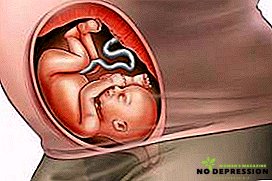 Размер плода составляет примерно33 см, вес - коло 700 г. кожа малыша приобретает цвет, становится плотной.
Размер плода составляет примерно33 см, вес - коло 700 г. кожа малыша приобретает цвет, становится плотной.
Легкие тренируются, но при преждевременном рождении плод не сможет дышать самостоятельно.
Яички у мальчиков уже достигают мошонки. У плода появляется хватательный рефлекс.
Головной мозг налаживает связь с надпочечниками.
Состояние матери
Молочные железы начинают продуцировать молозиво, однако это случается не у всех женщин. Симптомы беременности в норме: изжога, запор, боли в пояснице, судороги, отеки, отдышка, ухудшения состояния зубов, волос.
Неделя 26-ая
Развитие плода
 Рост малыша равен 35 см, вес - почти 800 г. Толчки плода становятся болезненными. Слух становится более тонким. Увеличивается активность ребенка, так как он становится сильнее.
Рост малыша равен 35 см, вес - почти 800 г. Толчки плода становятся болезненными. Слух становится более тонким. Увеличивается активность ребенка, так как он становится сильнее.
Состояние матери
С увеличением веса все перечисленные симптомы беременности только усиливаются, появляются судороги в икроножных мышцах. Врач может диагностировать гестоз, выраженный в отечности, головных болях, тошноте, рвоте, гипоксию, а также маловодие или многоводие, повышенный тонус матки. Все эти явления в большинстве случаев лечатся медикаментозно.
Неделя 27-ая
Развитие плода
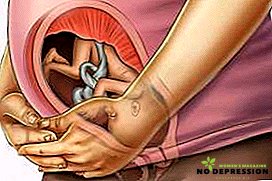 На 27 неделе малыш перерастает 35 см рост, вес достигает 1 кг.
На 27 неделе малыш перерастает 35 см рост, вес достигает 1 кг.
Во сне ребенок уже способен ан первую улыбку.
С кожи исчезают пушковые волосы, остаются только в области плеч.
Состояние матери
Дно матки поднимается на высоту около 30 см. над лоном, поэтому у матери возникают трудности с дыханием. Необходимо предотвратить застой крови и больше гулять.
Third trimester
Начинается завершающий, но е менее ответственный этап беременности. Органогенез завершен, малыш готовится к первому вздоху. Отныне, если начнутся преждевременные роды, есть высокий шанс на спасение ребенка.
Неделя 28-ая
Развитие плода
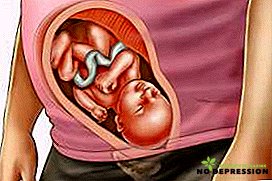 Шея удлиняется. Кожа постепенно разглаживается за счет жира. Кости остаются гибкими, хотя вся система жировой ткани сформировалась. Волосы удлиняются и их пигментация усиливается.
Шея удлиняется. Кожа постепенно разглаживается за счет жира. Кости остаются гибкими, хотя вся система жировой ткани сформировалась. Волосы удлиняются и их пигментация усиливается.
С глаз сходит зрачковая мембрана, ребенок учится открывать глаза, активно реагируя на свет. Малыш начинает различать кислое и сладкое.
Состояние матери
Женщина на 28 неделе может ощущать, как её бросает то в жар, то в холод. Это связано с новой скоростью обмена веществ и помогает вывести токсины из организма. В это время врач проводит исследование плаценты, делает вывод о её возрасте.
Преждевременное старение является показателем к проведению кесарева сечения. Недостаточность питательных веществ в плаценте выражается в снижении двигательной активности ребенка, меньшем размере живота, повышенном тонусе матки.






